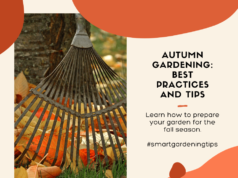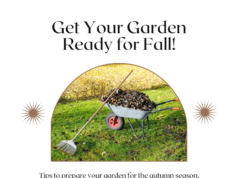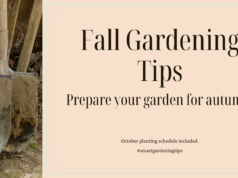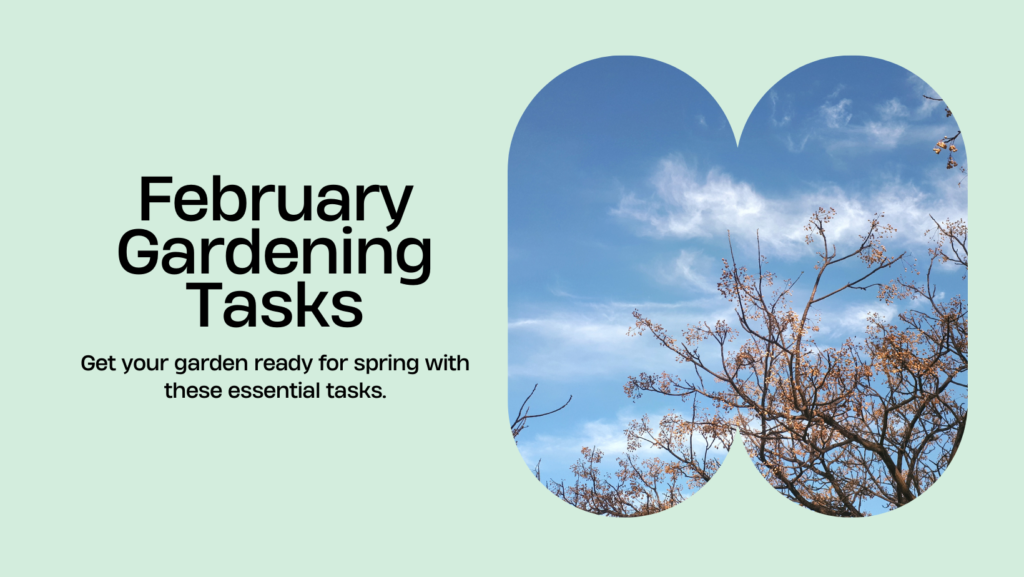
Get a head start on your spring garden with key February gardening tasks! As the winter season gradually gives way to warmer temperatures, now is the perfect time to start planning, pruning, and planting for a flourishing garden.
Key Takeaways:
- Plan and prepare your garden space and soil for the upcoming season.
- Prune dormant trees and shrubs to promote healthy growth.
- Start seeds indoors for early spring planting.
- Choose and plant cold-tolerant vegetables.
- Test soil pH and amend as needed for optimal plant growth.
Planning and Preparation for February Gardening Tasks
Before diving into your February gardening tasks, it’s essential to take the time to plan and prepare for the upcoming season. By assessing your garden space and soil condition, you can determine the best approach for a successful and bountiful garden. Additionally, creating a planting schedule will help you stay organized and ensure that tasks are completed at the appropriate times.
Evaluating Your Garden Space and Soil
Start by evaluating your garden space to identify any areas that may require attention. Take note of any existing plants, structures, or obstacles that could impact your planting plans. Consider factors such as sunlight exposure, drainage, and proximity to water sources.
Next, assess the condition of your soil. Conduct a soil test to determine its pH level and nutrient content. This information will guide you in making any necessary soil amendments and selecting the right plants for your garden.
Creating a Planting Schedule
A planting schedule is an invaluable tool for any gardener. It helps you stay on track and ensures that each plant receives the care it needs at the right time.
“A garden requires patient labor and attention. Plants do not grow merely to satisfy ambitions or to fulfill good intentions. They thrive because someone expended effort on them.” – Liberty Hyde Bailey
When creating your planting schedule, consider the specific requirements of each type of plant, such as optimal planting dates, spacing, and growth rate. Take into account the average maturity time for each plant so that you can plan for subsequent plantings or succession crops.
| Planting Schedule for February | Plant | Optimal Planting Date | Spacing | Growth Rate |
|---|---|---|---|---|
| 1 | Lettuce | 2/5 | 6 inches | Fast |
| 2 | Carrots | 2/10 | 3 inches | Slow |
| 3 | Broccoli | 2/15 | 18 inches | Medium |
Refer to the table above as a starting point for your planting schedule. Customize it with the specific plants you intend to grow, their optimal planting dates, recommended spacing, and growth rates.
By investing time in planning and preparing for your February gardening tasks, you’ll set yourself up for a productive and successful gardening season. So roll up your sleeves, grab your notebook, and get ready to create a flourishing garden!
Pruning and Maintenance
Pruning and maintenance are crucial tasks for keeping your garden in top shape. By pruning dormant trees and shrubs, you can promote healthy growth and encourage vibrant blooms in the upcoming season. In addition, inspecting and maintaining your garden tools and equipment ensures that they are ready for use whenever you need them.
Pruning Dormant Trees and Shrubs
Pruning dormant trees and shrubs during the winter months provides several benefits. It helps maintain their shape, stimulates new growth, and removes any dead or diseased branches. By pruning during dormancy, you can avoid interfering with the natural growth cycle of the plants.
When pruning trees and shrubs, be sure to:
- Use clean, sharp tools to make clean cuts without damaging the plants.
- Remove any crossed or rubbing branches to prevent future damage.
- Focus on removing dead, diseased, or damaged branches to keep the plants healthy.
Pruning cuts should be made just above a bud or lateral branch to encourage new growth in the desired direction. Take care not to remove more than one-third of the plant’s overall size in a single pruning session.
Inspecting and Maintaining Garden Tools and Equipment
Your garden tools and equipment play a vital role in maintaining your garden’s health and beauty. Regular inspection and maintenance ensure that they remain functional and reliable throughout the gardening season.
Here are some important steps to follow:
- Clean: Remove any dirt, debris, or plant material from your tools. Use a brush or cloth to wipe off any remaining residue.
- Inspect: Check for any signs of damage, such as rust or bent parts. If any tools are beyond repair, consider replacing them.
- Sharpen: Sharpen the cutting edges of pruners, shears, and other cutting tools to ensure clean cuts.
- Lubricate: Apply lubricating oil to moving parts, such as hinges or joints, to prevent rust and ensure smooth operation.
- Store: Properly store your tools in a dry area to prevent rust and damage. Hang them or use a tool rack to keep them organized and easily accessible.
By regularly pruning dormant trees and shrubs and maintaining your garden tools and equipment, you are taking essential steps towards a thriving and productive garden. These simple tasks can make a significant difference in the health and appearance of your plants.
Seed Starting and Indoor Gardening
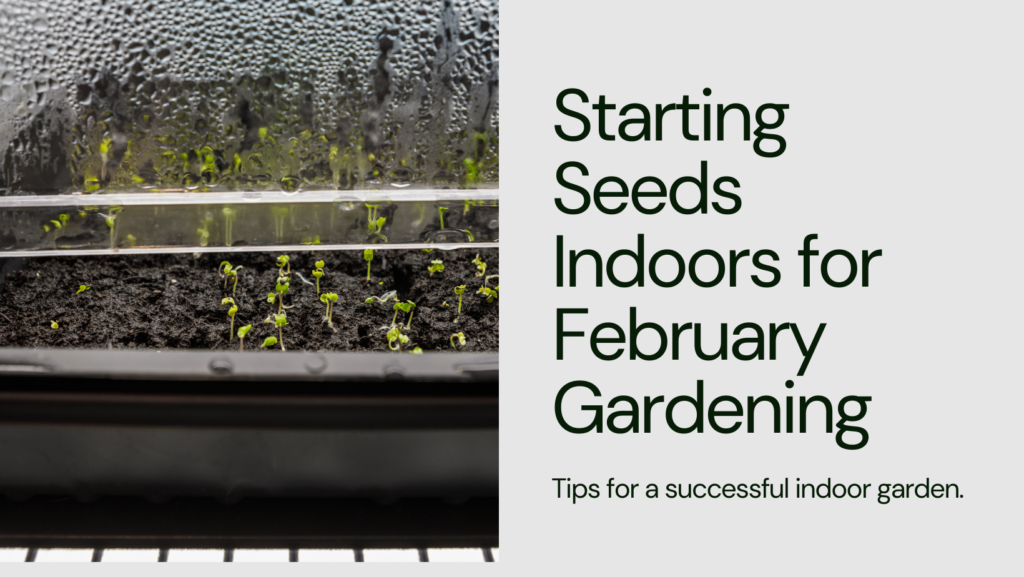
Get a head start on your spring planting by starting seeds indoors. This allows you to extend your growing season and gives your plants a strong start before transferring them to the outdoor garden. Additionally, caring for your indoor plants during the winter months ensures they thrive and remain healthy until the warmer weather arrives.
Starting Seeds Indoors for Early Spring Planting
Starting your seeds indoors is an excellent way to jump-start your garden. It gives you more control over the growing conditions and allows you to select a wider variety of plants. Here are some steps to follow when starting seeds indoors:
- Choose the right containers: Use seed trays, pots, or biodegradable peat pots for planting your seeds.
- Prepare the soil: Use a high-quality seed starting mix that provides the necessary nutrients and drainage for young plants.
- Sow the seeds: Follow the seed packet instructions for the correct planting depth and spacing. Moisten the soil gently after sowing the seeds.
- Provide proper lighting: Place your seed trays near a south-facing window or use fluorescent grow lights to ensure your seedlings receive adequate light.
- Monitor moisture levels: Keep the soil evenly moist, but avoid overwatering, as it can lead to damping-off disease.
- Transplanting: Once your seedlings have developed their second set of true leaves, transplant them into larger containers or pots.
- Harden off before planting: Gradually acclimate your seedlings to outdoor conditions by exposing them to increasing amounts of sunlight and outdoor temperatures.
By starting your seeds indoors, you can enjoy an earlier harvest and have stronger, healthier plants when it’s time to move them outdoors.
Caring for Indoor Plants During the Winter Months
While your outdoor garden may be dormant during the winter, it’s important not to forget about your indoor plants. Here are some tips to keep them thriving during the colder months:
- Provide proper lighting: Place your indoor plants near a bright window or use supplemental grow lights to ensure they receive adequate light.
- Monitor temperature and humidity: Indoor plants generally prefer temperatures between 60-75°F (15-24°C) and humidity levels between 40-60%. Avoid placing your plants near drafts or heat sources.
- Water appropriately: Check the moisture level of the soil regularly and water only when the top inch feels dry. Overwatering can lead to root rot, while underwatering can cause stress.
- Rotate regularly: To ensure even growth, rotate your indoor plants every few weeks to expose all sides to light.
- Clean leaves: Dust can accumulate on indoor plant leaves, hindering their ability to absorb light. Gently wipe the leaves with a damp cloth to keep them clean and healthy.
- Watch for pests: Indoor plants can still fall victim to pests, such as spider mites and aphids. Inspect your plants regularly and take appropriate measures if pests are present.
By providing your indoor plants with proper care and attention, they will thrive and contribute to a greener and more vibrant indoor environment.
| Benefits of Seed Starting Indoors | Benefits of Caring for Indoor Plants in Winter |
|---|---|
| Extended growing seasonGreater variety of plant optionsStronger and healthier plantsControl over growing conditionsEarly harvest | Maintain vibrant indoor environmentContinue gardening during winterImprove air qualityEnhance mood and well-beingEnjoy greenery year-round |
Cold Weather Vegetables and Plants
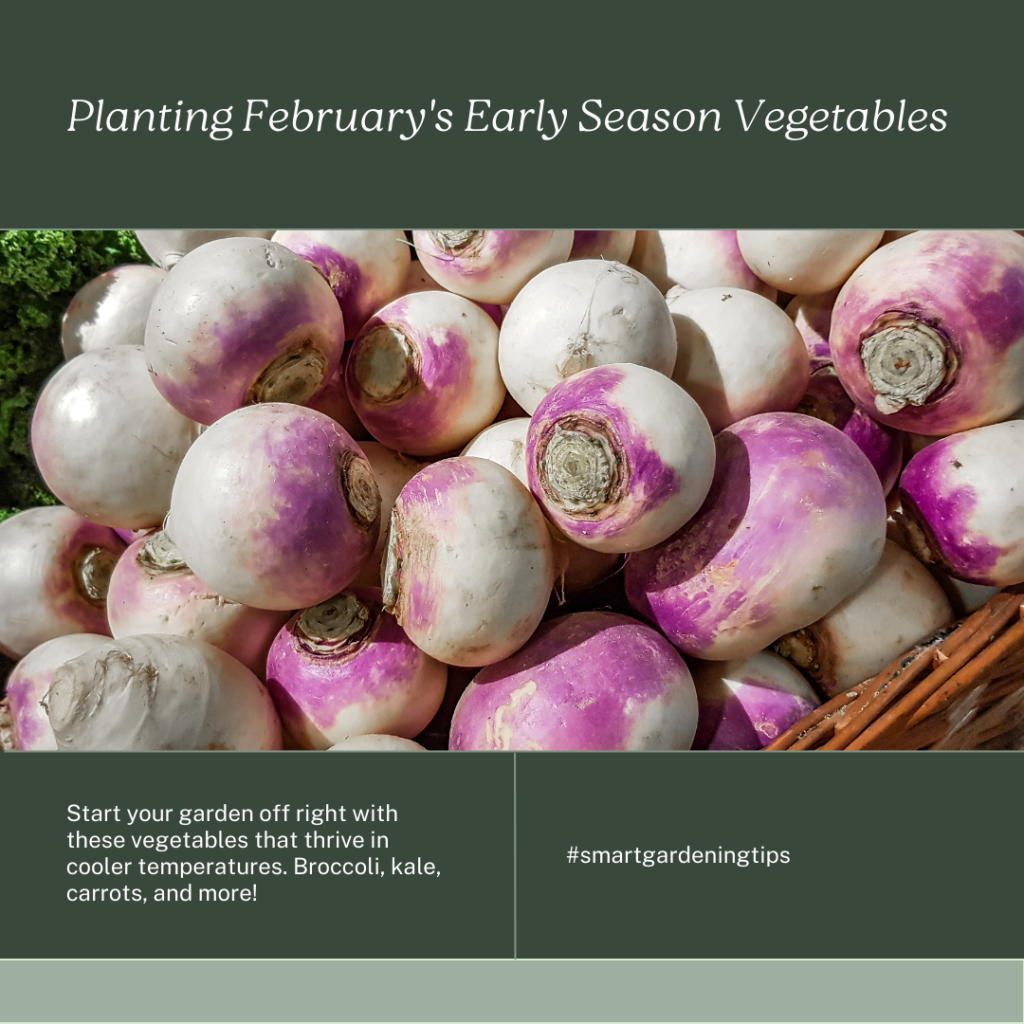
When it comes to gardening in cold weather, choosing and planting cold-tolerant vegetables is key. These resilient plants can withstand lower temperatures, allowing you to continue growing and enjoying fresh produce even during chilly months.
Here are some popular cold weather vegetables and plants that thrive in colder climates:
- Broccoli: Known for its rich flavor and high nutritional value, broccoli is a cold-hardy vegetable that can tolerate frost.
- Kale: A versatile leafy green, kale is highly frost-tolerant and even becomes sweeter after a frost.
- Carrots: Root vegetables like carrots can withstand cold temperatures and are easy to grow in cooler months.
- Spinach: Spinach is a cold weather favorite that can handle frost and tends to thrive in cool temperatures.
- Peas: Peas are a great option for early spring planting as they can tolerate cool weather and produce delicious sweet pods.
When planting cold-tolerant vegetables, it’s important to consider the right timing. Some vegetables, like broccoli and kale, can be direct-sown into the garden as soon as the soil is workable in early spring. Others, like peas, can be started indoors and transplanted outdoors once the weather warms up.
To protect delicate plants from frost and cold weather, there are a few strategies you can implement:
- Row covers: Use lightweight fabric covers to create a barrier between your plants and the cold air. These covers allow light, air, and water to penetrate while providing insulation.
- Mulching: Apply a layer of organic mulch, such as straw or shredded leaves, around the base of your plants. This helps to regulate soil temperature and retain moisture.
- Plant in raised beds: Raised beds can warm up faster in the spring and provide better drainage, reducing the risk of waterlogged roots in cold weather.
By selecting cold-tolerant vegetables and implementing protection measures, you can enjoy a thriving garden even in the midst of cold weather. So don’t let the chilly temperatures deter you from growing your own fresh and delicious produce!
Soil Health and Composting
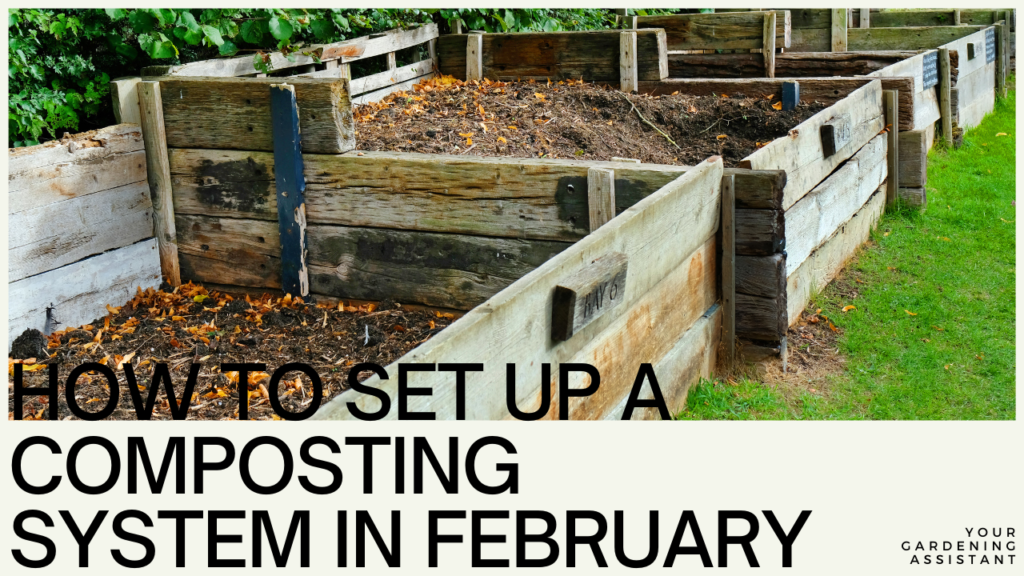
When it comes to gardening, healthy soil is the foundation for thriving plants. Understanding your soil’s pH and making necessary amendments is key to promoting optimal plant growth. Additionally, composting is a fantastic way to improve soil health and provide essential nutrients to your plants.
Start by testing the pH of your soil using a soil testing kit or sending samples to a local agricultural extension office. This will help you determine if your soil is too acidic or alkaline and guide you in making the appropriate adjustments. By maintaining the right pH level, plants can absorb nutrients more efficiently, leading to healthier vegetation.
Amending the soil as needed is crucial to create an ideal growing environment. If your soil is too acidic (low pH), adding agricultural lime can help raise the pH. On the other hand, if the soil is too alkaline (high pH), incorporating elemental sulfur or peat moss can help lower the pH.
Starting a Compost Pile
Composting is a sustainable practice that not only reduces waste but also enriches your soil with organic matter. To start a compost pile, gather kitchen scraps, yard waste, and other biodegradable materials such as leaves, grass clippings, and coffee grounds.
Remember to avoid adding meat, dairy, or oily substances to your compost pile, as they can attract pests and slow down the decomposition process.
Mix the organic materials together, making sure to moisten the pile as you go. Over time, the organic matter will break down, turning into nutrient-rich compost that can be incorporated into your garden soil.
Maintaining an Existing Compost Pile
If you already have a compost pile, it’s important to maintain it properly. Regularly monitor the moisture level of the pile, ensuring it remains moist but not overly saturated. Turning the compost with a pitchfork or garden fork every few weeks will help speed up the decomposition process and prevent unpleasant odors.
Remember that a balanced mix of ingredients, including a combination of green (nitrogen-rich) and brown (carbon-rich) materials, is crucial for successful composting.
By maintaining an active compost pile and incorporating the resulting compost into your soil, you’ll improve its structure, moisture retention, and nutrient content. This, in turn, will support the overall health and productivity of your garden.
| Benefits of Soil Testing and pH Amendments | Tips for Composting Success |
|---|---|
| Optimize nutrient uptake by plants Prevent nutrient deficiencies Improve soil structure and drainage Enhance microbial activity | Collect a diverse range of organic materials, Maintain a balance of green and brown materials. Keep the pile moist, but not waterlogged. Aerate the compost regularly |
Tips for Wildlife and Garden Visitors
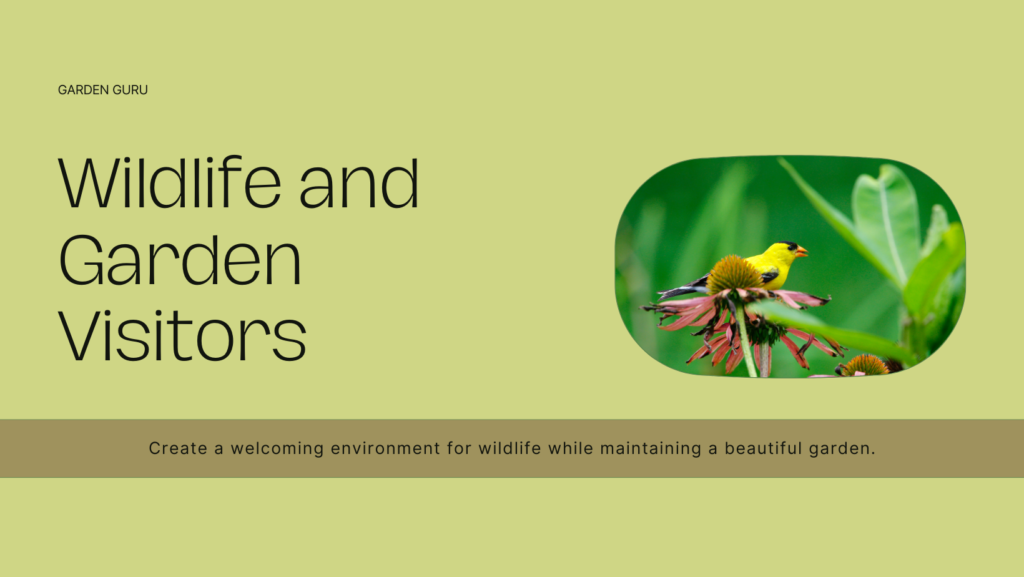
Welcome garden visitors and create a thriving haven for wildlife by following these tips. By providing food and shelter, you’ll attract a variety of fascinating creatures to your garden. Additionally, implement safe and eco-friendly pest control strategies to protect your garden and the environment.
Providing Food and Shelter
- Plant native flowers and shrubs that produce nectar, berries, or seeds, as they provide a valuable food source for wildlife. Some excellent choices include:
| Plant | Benefits |
|---|---|
| Tulipa | Rich source of nectar for bees and butterflies. |
| Echinacea | Attracts birds and provides seeds for finches and sparrows. |
| Rosa Rugosa | Produces rose hips, a favorite snack for birds during the colder months. |
- Create a water source, such as a birdbath or small pond, to offer a place for wildlife to drink and bathe. Ensure it remains clean and filled with fresh water.
- Provide nesting places by incorporating birdhouses, bat boxes, and butterfly houses into your garden. These structures offer shelter and encourage wildlife to thrive.
- Consider leaving fallen logs or tree stumps in your garden to provide homes for insects, which in turn attract larger garden visitors such as birds and hedgehogs.
Implementing Pest Control Strategies
Protect your garden from pests without harming the environment by adopting safe and eco-friendly strategies:
- Encourage natural predators like ladybugs, lacewings, and birds to control pests like aphids and caterpillars.
- Introduce companion plants, such as marigolds and chrysanthemums, that repel insects.
- Use organic pest control products, like neem oil or insecticidal soap, which are safe for the environment but effective against pests.
By incorporating these tips into your gardening routine, you’ll create an inviting environment for wildlife while maintaining a balanced and thriving garden.
Identifying And Controlling Common Garden Pest
As you work diligently to maintain a beautiful and thriving garden, it’s essential to protect your plants from common pests that can wreak havoc on your hard work. By implementing effective pest control measures, you can safeguard your garden and ensure its long-term success.
Identifying Common Garden Pests
Before you can effectively control garden pests, it’s important to understand which ones you’re dealing with. Here are some common garden pests to watch out for:
- Aphids
- Slugs and Snails
- Cabbage Worms
- Japanese Beetles
- Squash Bugs
Each pest has its own unique characteristics and feeding behaviors, so it’s important to properly identify them before taking action.
Implementing Natural Pest Control Methods
When it comes to pest control, natural methods are often the safest and most effective options. Here are some natural pest control methods you can try:
- Companion Planting: Utilize plants that repel pests or attract beneficial insects to your garden.
- Handpicking: Physically removing pests from your plants.
- Organic Pesticides: Using environmentally friendly pesticides made from natural substances.
- Barriers: Creating physical barriers like fences or row covers to keep pests away from your plants.
- Attracting Beneficial Insects: Encouraging the presence of ladybugs, lacewings, and other helpful insects that prey on garden pests.
Remember to follow the instructions carefully when using any pest control methods and prioritize the safety of your plants, yourself, and the environment.
Monitoring and Preventing Pest Infestations
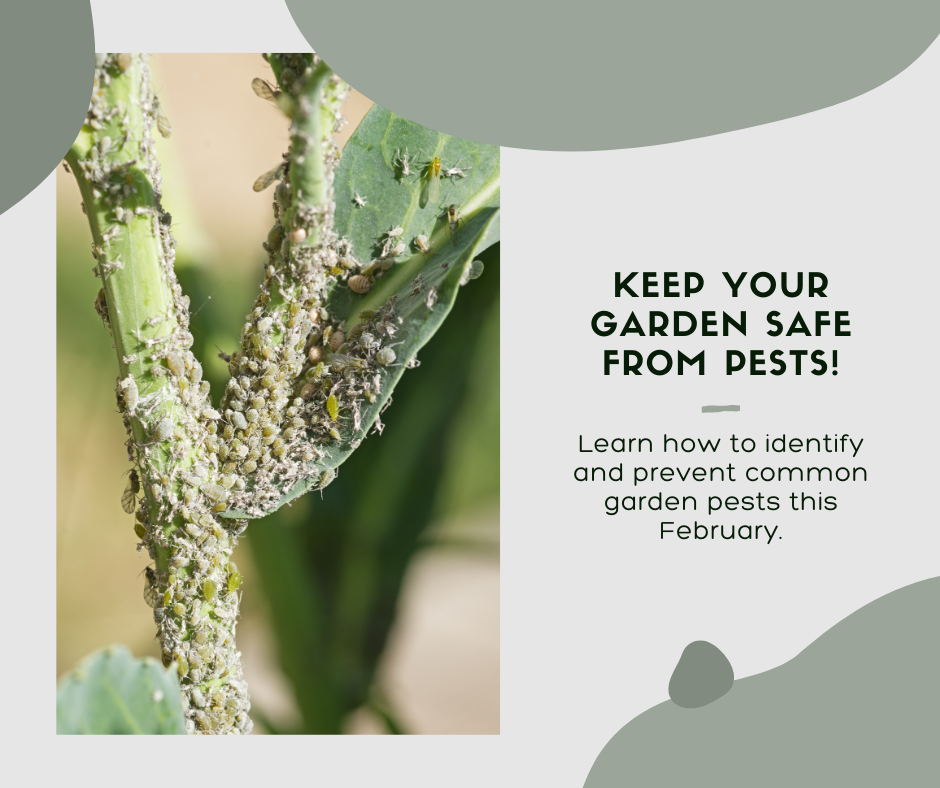
Regular monitoring is crucial for preventing pest infestations in your garden. Keep an eye out for early signs of pest activity, such as chewed leaves or discolored foliage. By catching infestations early, you can take swift action to minimize the damage.
In addition to monitoring, there are several preventive measures you can take to discourage pests from invading your garden:
- Remove weeds and debris that can provide hiding places for pests.
- Maintain proper plant spacing to improve air circulation and reduce pest-friendly conditions.
- Rotate your crops each season to disrupt pest life cycles.
- Provide adequate water and nutrients to keep your plants healthy and resilient.
By implementing these preventive measures, you can create a less favorable environment for pests and reduce the risk of infestations.
Seeking Professional Help
If you’re facing a severe pest infestation or struggling to control pests on your own, it may be wise to seek professional help. Pest control companies have the expertise and resources to address complex pest problems effectively.
When hiring a professional pest control service:
- Research local companies and read reviews to find reputable and reliable professionals.
- Ask for recommendations from fellow gardeners or neighbors who have dealt with similar pest issues.
- Inquire about their pest control methods and ensure they align with your preferences for organic or chemical-free solutions.
- Request a detailed estimate and inquire about any guarantees or warranties provided.
Remember, prevention is key when it comes to garden pests. By practicing good garden hygiene, using natural pest control methods, and monitoring your plants regularly, you can protect your garden from common pests and enjoy a vibrant and thriving outdoor space.
Looking to add a touch of elegance to your garden? Consider incorporating plants into your landscape. These stunning plants not only enhance the visual appeal of your outdoor space but also provide various benefits for your garden ecosystem.
Benefits of February Gardening
- Enhance biodiversity: Attract a wide range of pollinators, including bees, butterflies, and birds, which play a crucial role in pollination.
- Natural pest control: Some varieties possess natural pest-repellent properties, helping to reduce the need for harmful chemical pesticides.
- Drought tolerance: [Insert relevant keywords] are known for their ability to withstand dry conditions, making them perfect for regions with limited water availability.
- Low maintenance: Once established, [Insert relevant keywords] are generally low maintenance and require minimal care, allowing you to enjoy their beauty without excessive effort.
FAQ
Q. What tasks should I focus on in February for my garden?
A. In February, it’s a great time to plan and prepare for the upcoming gardening season. Some key tasks to focus on include assessing your garden space and soil condition, creating a planting schedule, pruning dormant trees and shrubs, starting seeds indoors, choosing and planting cold-tolerant vegetables, testing soil pH, and providing food and shelter for wildlife in the garden.
Q. How do I assess my garden space and soil condition?
A. Assessing your garden space involves evaluating the amount of sunlight, soil drainage, and available space for planting. You should also test your soil pH to determine if any amendments are needed. This process will help you determine which plants will thrive in your garden and allow you to plan accordingly.
Q. How can I create a planting schedule for the upcoming season?
A. Creating a planting schedule involves researching the specific planting times for various vegetables, flowers, and herbs in your region. Consider factors such as frost dates and the recommended time for transplanting. By organizing your planting schedule, you can ensure proper timing and maximize your garden’s potential.
Q. What should I focus on when pruning dormant trees and shrubs?
A. When pruning dormant trees and shrubs, prioritize removing dead or damaged branches to promote healthy growth. Make clean cuts just above the branch collar, and avoid cutting too close to the trunk. It’s also important to inspect and maintain your garden tools and equipment regularly to ensure they are in good working condition.
Q. How can I start seeds indoors for early spring planting?
A. To start seeds indoors, you will need seed trays or pots, a sterile seed starting mix, and a warm, well-lit area. Follow the specific instructions on the seed packets regarding depth and spacing. Ensure the seeds receive adequate moisture and warmth to germinate. Once seedlings have grown, gradually acclimate them to outdoor conditions before transplanting them into the garden.
Q. How do I choose and plant cold-tolerant vegetables?
A. When selecting cold-tolerant vegetables, consider options such as kale, spinach, carrots, and Brussels sprouts. These vegetables can withstand lower temperatures and even improve in flavor with a touch of frost. Plant them in well-drained soil and protect delicate seedlings from frost with row covers or cloches.
Q. How can I test soil pH and amend the soil if needed?
A. You can test soil pH using a home testing kit or by sending a soil sample to a local agricultural extension office. Based on the results, you can amend the soil by adding organic matter, such as compost or aged manure, to adjust the pH levels. This helps ensure that nutrients are readily available to plants and promotes healthy growth.
Q. What can I do to provide food and shelter for wildlife in my garden?
A. You can provide food and shelter for wildlife in your garden by planting native flowers, shrubs, and trees that provide nectar, fruits, and seeds. Installing bird feeders, birdhouses, and birdbaths also attract birds. Adding a small pond or water feature can provide a water source for wildlife. Avoid pesticides and herbicides that may harm animals and insects.
Conclusion
February is a crucial time for your garden’s success in the upcoming spring season. By taking advantage of the available time and following key tasks, you can ensure a thriving and beautiful garden. Planning and preparing for February gardening tasks will help you make the most of your garden space and soil condition. Creating a planting schedule will ensure that you stay organized and plant at the right time.
Pruning and maintenance are essential for promoting healthy growth. Take the opportunity to prune dormant trees and shrubs, allowing them to flourish in the coming months. Additionally, don’t forget to inspect and maintain your garden tools and equipment so they’re in top shape when you need them.
Seed starting indoors is a great way to give your plants a head start. By starting seeds indoors for early spring planting, you can enjoy a longer growing season. During the winter months, make sure to care for your indoor plants as well, providing them with the necessary light, water, and attention.
Cold weather vegetables and plants are a fantastic addition to your garden during February. Choose and plant cold-tolerant vegetables that can withstand lower temperatures. To protect delicate plants from frost and cold weather, implement measures like using covers or relocating them temporarily.
To promote optimal plant growth, prioritize soil health and composting. Test the pH of your soil and amend it as needed to create an ideal environment for your plants. Starting a compost pile or maintaining an existing one will help enrich your soil with nutrients and improve its overall health.
Lastly, create a garden environment that welcomes wildlife while implementing safe pest control strategies. Provide food and shelter for wildlife, such as bird feeders and nesting boxes. When dealing with pests, opt for environmentally friendly solutions to protect your garden and the ecosystem.
By focusing on planning, pruning, and preparation during February, you’re setting the stage for a successful gardening season. Take the time to complete these tasks, and you’ll be rewarded with a flourishing garden in the spring.



